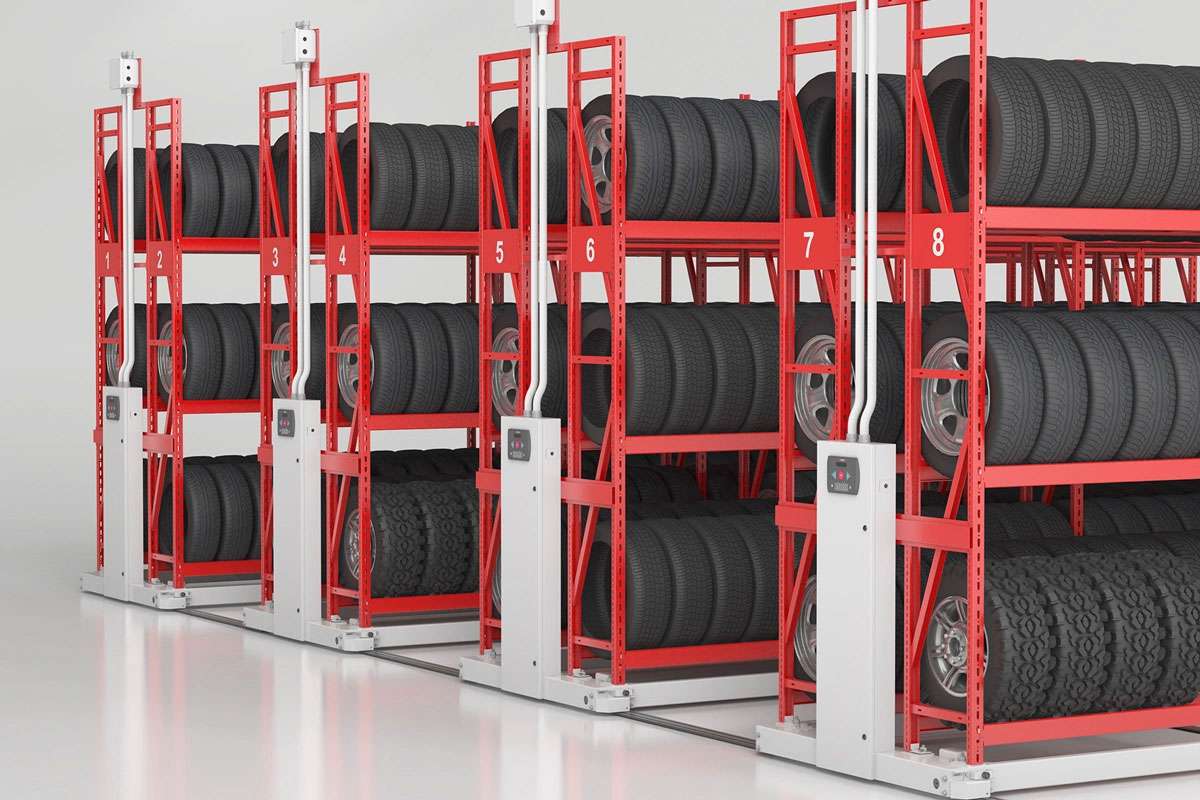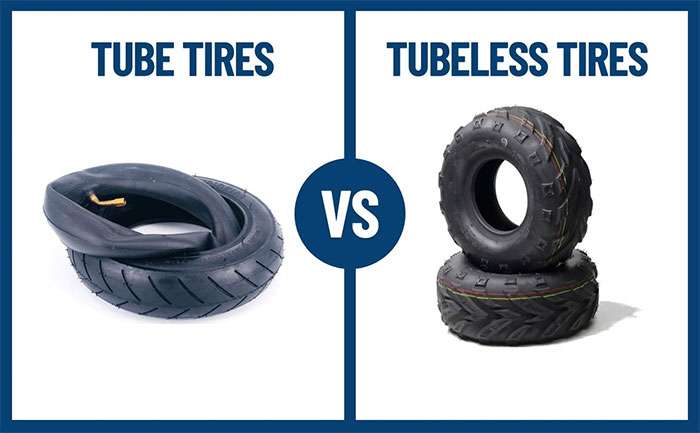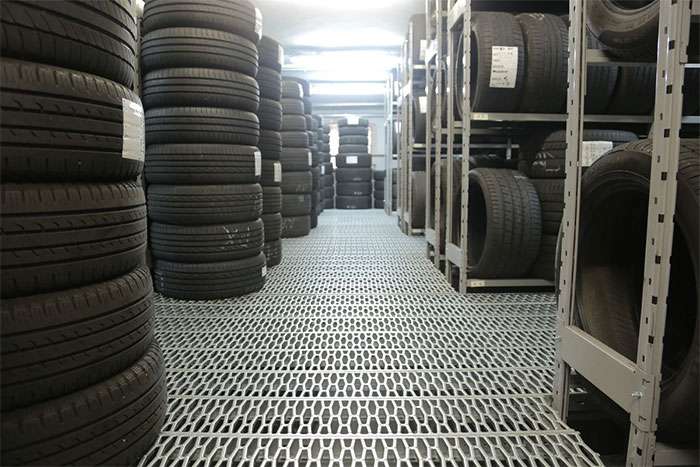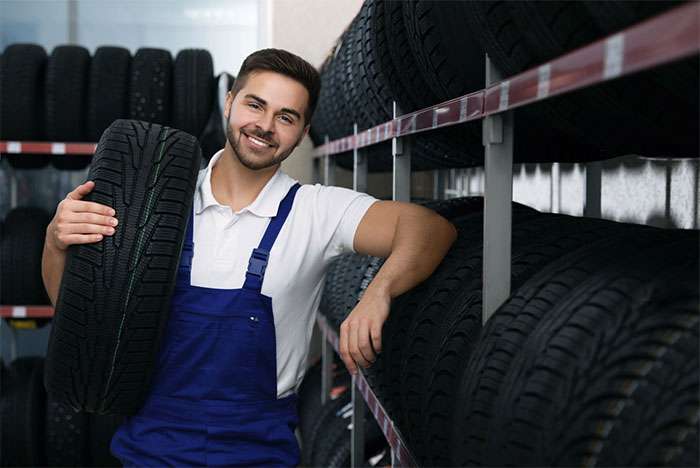
Proper storing your wheels and tires during seasonal changes is one of the most effective ways to extend their lifespan and maintain peak performance. Temperature fluctuations cause tire rubber compounds to degrade when exposed to improper storage conditions.
Winter tires should be switched when nighttime temperatures consistently reach 40°F. Summer tires deliver superior traction and handling as temperatures climb compared to winter compounds. Storing your off-season tires correctly represents a simple yet crucial step for maintaining your vehicle's performance throughout the year.
Poor storage practices create serious problems including cracks, dry rot, flat spots, and dangerous driving conditions when you reinstall the tires. Excess moisture degrades tire compounds while excessive heat accelerates rubber breakdown. The optimal storage environment maintains cool, dry conditions with temperatures between 40°F and 75°F.
This step-by-step guide shows you exactly how to store your wheels and tires during seasonal changes to maximize their longevity and ensure they're ready when you need them again.

Image Source: GARVEE
Proper tire storage goes beyond clearing garage space—it's essential for protecting your tire investment. Tires contain various materials, including rubber compounds with specific performance properties that degrade without proper care.
Temperature changes dramatically impact tire composition. Winter tires use special rubber compounds designed to stay soft in cold conditions for better grip on icy roads. When temperatures rise, these tires wear faster due to increased friction. Summer tires perform best in warmer conditions but lose traction when temperatures drop.
Humidity creates another seasonal challenge, causing tire pressure changes and accelerated tread wear. Prolonged sun exposure damages tires by drying out the rubber, causing cracks and deterioration as UV rays break down rubber compounds.
Improper storage creates several costly problems:
UV damage: Sunlight exposure causes rubber deterioration, reducing strength and resilience
Flat spots: Tires stored under vehicle weight develop flat areas that affect performance
Ozone cracking: Electric motors and equipment generate ozone that damages tire rubber
Chemical degradation: Gasoline, oils, solvents and chemicals break down rubber compounds
Moisture damage: Water contact leads to rim corrosion and rubber cracking
These problems don't just affect appearance—they compromise structural integrity,

Image Source: Tire Think
Preparing your tires properly before storage makes the difference between tires that perform like new next season and ones that need premature replacement. These essential preparation steps protect your tire investment and ensure optimal performance when you reinstall them.
Road grime and dirt cause tire deterioration during storage by breaking down rubber compounds. Wash each tire with mild soap and water, paying close attention to treads and sidewalls where debris accumulates. A soft brush removes stubborn contaminants, especially brake dust which corrodes both tires and wheels.
Complete drying prevents moisture-related problems like rust formation and mold growth. Mounted tires require additional attention to wheel cleaning—use gentle detergent to preserve the finish and prevent corrosion.
Storage time provides the perfect opportunity to identify potential problems before they become safety hazards. Check sidewalls carefully for cracks, bulges, or other structural damage that could compromise tire integrity. Measure tread depth to ensure it exceeds 2/32 of an inch.
Look for uneven wear patterns that signal alignment issues or improper inflation. Remove embedded objects like nails or stones with needle-nose pliers to prevent further damage. This inspection gives you months to address any issues before the next driving season.
Proper inflation prevents the flat spots that develop when tires sit stationary for extended periods. Tires mounted on rims should be inflated to manufacturer specifications. Some experts recommend 50% of normal pressure, while others suggest 25% above recommended levels. The key goal is preventing those annoying thumps and vibrations caused by flat spots when you return the tires to service.
Marking each tire's original position ensures proper rotation patterns and even wear distribution. Use a grease pencil to label each tire clearly—FL for front left, RR for rear right, and so on. This simple step maintains your established rotation schedule and promotes balanced tire wear.
For unmounted tires, tag storage bags with position information to make spring installation effortless.

Image Source: Fleximounts
Selecting the right storage location makes all the difference between tires that perform like new and those that need premature replacement. Your storage choices directly determine how well your investment will serve you when the seasons change again.
Basements and climate-controlled garages provide the most reliable environments for long-term tire storage. These spaces offer consistent protection from the temperature swings that break down rubber compounds over time. Outdoor storage presents too many variables - even protective covers can't shield against moisture buildup and temperature extremes that cause permanent damage.
Storage sheds rarely maintain stable conditions throughout seasonal transitions. When using a garage, position tires away from windows where UV rays can penetrate and cause photodegradation. The goal is creating a stable microenvironment that preserves rubber integrity.
The storage method depends entirely on whether your tires are mounted:
Mounted tires should be stacked horizontally or suspended from hooks through the rim - never hang them by the tire itself. This prevents deformation while distributing weight properly across the structure.
Unmounted tires perform best when stored standing upright. This position minimizes stress on sidewalls and maintains the tire's natural shape. Place them on wooden pallets instead of concrete floors to prevent moisture wicking and temperature transfer from the ground.
Temperature control represents the most critical factor in tire preservation. Maintain storage areas between 50°F and 77°F with humidity levels below 75%. Extreme heat accelerates chemical breakdown in rubber compounds, while cold temperatures can make materials brittle and prone to cracking.
Watch for condensation formation - it signals humidity problems that lead to accelerated deterioration and potential mold growth.
Ultraviolet radiation causes photodegradation that weakens tire structure through invisible damage. Store tires in dark environments completely away from direct sunlight exposure.
Keep your storage area free from ozone-producing equipment like furnaces, vacuum cleaners, and generators. Chemical exposure from gasoline, oils, solvents, and lubricants breaks down rubber compounds at the molecular level. These substances can cause irreversible damage even in small concentrations over time.

Image Source: JTs Chrysler Dodge Jeep RAM of Lexington
Once you've selected the right storage location, implementing proper protection methods and positioning techniques becomes your next priority. Protecting your tire investment requires attention to several key details that make the difference between tires that perform like new and those that need premature replacement.
Tire bags shield your tires from environmental elements that cause premature aging. Place clean, dry tires in airtight plastic bags—leaf or yard bags work well when sealed with heavy-duty tape. Remove as much air as possible using a vacuum cleaner before sealing to prevent oil evaporation from the rubber compounds. For added protection against moisture, consider adding silica gel packets inside each bag.
Commercial tire totes offer convenient carrying handles but aren't airtight. Consider using both approaches: bag tires first, then place them in totes for easier transport. This dual protection system gives you the best of both worlds—environmental protection and convenient handling.
Mounted tires: Stack horizontally or hang from hooks through the rim (never through the tire itself)
Unmounted tires: Store upright (vertically) to prevent sidewall stress and deformation
Limited space: If stacking unmounted tires, rotate the stack regularly to prevent uneven pressure
Extended storage requires maintaining proper inflation—consider inflating to the maximum pressure listed on the sidewall if tires will support a vehicle. Keep tires away from ozone-producing equipment like generators, air purifiers, furnaces, and central vacuum systems. Avoid exposure to solvents, fuels, and lubricants that damage rubber compounds.
Inspect stored tires approximately once every three months. For vehicles stored long-term, move them monthly to minimize ozone cracking and prevent flat spots. High-performance tires need more frequent attention—check them at least once every 30 days. During inspections, look for signs of cracking, bulging, or other damage that might have developed.
Regular monitoring ensures your tires remain in excellent condition and ready for peak performance when you need them again.
Proper tire storage is a critical aspect of vehicle maintenance that directly impacts your investment and safety. We've covered how seasonal changes affect tire compounds and provided specific steps to prepare your tires for storage, from cleaning and inspection to proper inflation and labeling.
The storage location you choose makes all the difference when it's time to reinstall your tires. Cool, dry environments away from sunlight, chemicals, and ozone-producing equipment preserve rubber compounds and extend tire life. Whether you're storing mounted or unmounted tires, correct positioning techniques prevent costly deformation.
Most importantly, this small investment of time yields substantial returns in performance and cost savings. Following these storage practices helps you avoid premature replacement expenses while ensuring your tires perform at their best when reinstalled. Your tires represent your vehicle's only contact with the road—their condition directly affects handling, fuel efficiency, and safety.
When you prepare for your next seasonal tire change, use these storage techniques to protect your investment. You'll retrieve tires that remain in excellent condition, ready for another season of reliable performance.
Proper tire storage during seasonal changes can significantly extend tire lifespan and save you money while ensuring optimal performance when you need them again.
• Clean and inspect tires thoroughly before storage, checking for damage and adjusting air pressure to prevent flat spots • Store tires in cool, dry locations (50-77°F) away from sunlight, chemicals, and ozone-producing equipment like furnaces • Use different positioning methods: stack mounted tires horizontally, store unmounted tires upright to prevent sidewall stress • Protect tires with airtight plastic bags or covers, and label each tire's position for proper reinstallation • Check stored tires every 3 months for damage and rotate vehicle monthly if storing long-term to prevent flat spots
Following these storage practices protects your tire investment from UV damage, moisture, and chemical degradation that can lead to costly premature replacement and unsafe driving conditions.
It's recommended to inspect stored tires approximately once every three months. For vehicles in long-term storage, move them monthly to prevent flat spots and minimize ozone cracking. High-performance tires may require more frequent checks, at least once every 30 days.
The ideal temperature range for tire storage is between 50°F and 77°F (10-25°C). Extreme temperatures, both hot and cold, can permanently alter rubber compounds and accelerate tire degradation.
Outdoor storage is not recommended for tires, even with protective covers. Outdoor environments expose tires to harmful UV rays, temperature fluctuations, and moisture, all of which can significantly reduce tire lifespan and performance.
For mounted tires, it's best to keep them inflated. Some experts suggest inflating to the manufacturer's recommended pressure, while others recommend inflating to 50% of normal pressure or 25% above the recommended pressure. The main goal is to prevent flat spots from developing during storage.
To prepare tires for storage, thoroughly clean them with mild soap and water, ensuring they are completely dry afterward. Inspect for wear, cracks, or damage, and remove any embedded objects. Check and adjust air pressure as needed, and label each tire's position for proper reinstallation later.